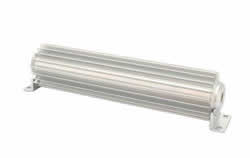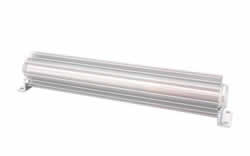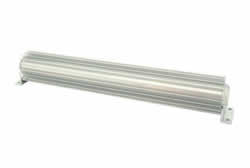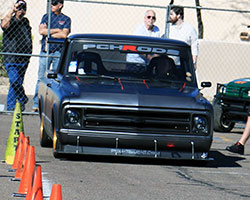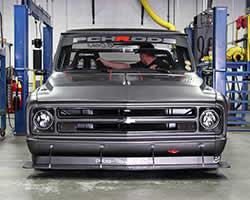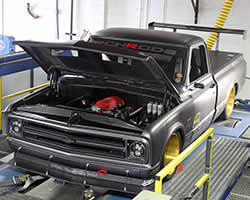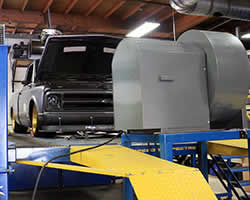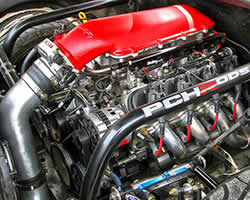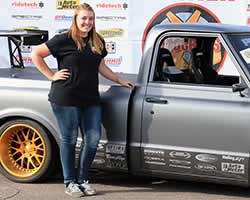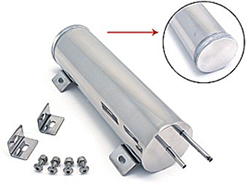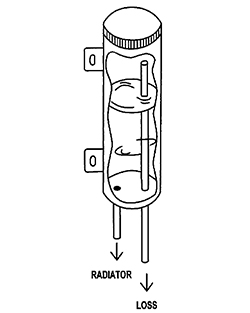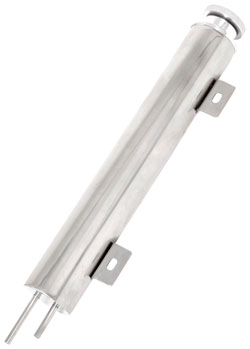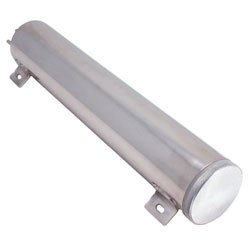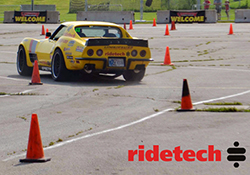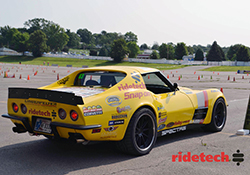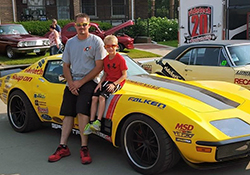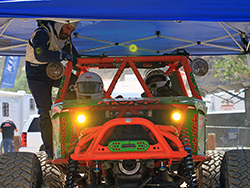 The Ultra4 limited class main event was three times longer than the heat race and with a better starting position, the Wickham brothers had no intentions of going home empty handed
|
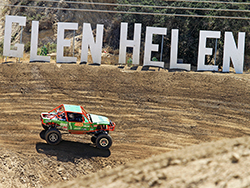 The Ultra4 Racing 2015 Glen Helen Grand Prix was held at the iconic raceway which opened in 1985 and rose to fame by hosting the United States World Championship Motocross
|
Hammerking Productions is the force behind the toughest one-day off-road race on the planet: King of The Hammers. Due to the incredible success of King of the Hammers, Hammerking created the ULTRA4 Racing Series with seven races held throughout the country. Each of these races is a qualifier for the King of The Hammers race each year and the series challenges drivers to compete in a wide variety of terrain from endurance desert racing to competition-style rock crawls as well as short course off-road racing. Brothers Kyle and Jade Wickham compete in the 4800 Legends Class of the Ultra4 Racing Series. The legends class was created to provide older 4400 Unlimited class cars with an avenue to remain competitive in the Ultra4 Series and King Of The Hammers. Some people are now building cars specifically for this class as a slightly more cost effective way to get into Ultra4 racing. The only big difference between the Legends 4800 and Ultra 4 4400 class is that the 4800 cars must retain solid axles, cannot run larger than 37” tires, and can only use a single shock in each corner.
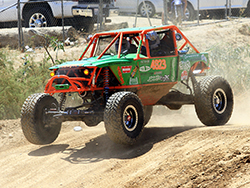 Brothers Kyle and Jade Wickham compete in the 4800 Legends Class of the Ultra4 Racing Series created to provide older 4400 Unlimited class cars an avenue to remain competitive
|
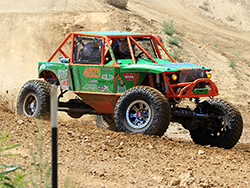 The ULTRA4 Racing Series challenges drivers to compete in a wide variety of terrain from endurance desert racing to competition-style rock crawls as well as short course off-road racing
|
Jade and Kyle Wickham put together a great run at their first King Of The Hammers, despite their eventual DNF, and have been following the Ultra4 2015 Trail Gear Western Regional Series ever since. Due to time constraints the limited classes do not start their heat races based on qualifying times. Instead, their half hour heat race starting position is based on the luck of the draw. For Jade and Kyle the luck of the draw wasn’t in their favor and the brothers started their heat from the very last position. With Kyle behind the wheel and Jade riding shotgun, the duo quickly turned lemons into lemonade. In just 30 minutes, and five laps, they had driven their number 4823 Spectre Performance equipped Legends car into the 10th position. While gaining six positions in their class doesn’t sound like a lot, it must be noted that all the limited class cars, including the 4500 modified, 4600 stock, and 4700 spec class cars are on the track at the same time. That meant that while Jade and Kyle had to catch members of their class they were also forced to find ways around cars in different classes.
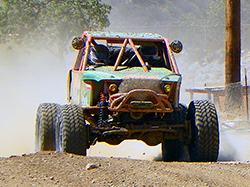 Motocross legend and accomplished short course truck racer, Ricky Johnson set the pace in the 4748 Spec car with lap times around 6-1/2 minutes; however Kyle and Jade weren’t far off
|
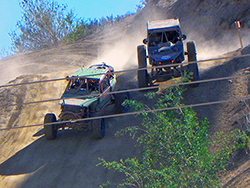 Kyle was able to pilot the Spectre Performance equipped #4823 around the track and gain a position just two turns before crossing the finish line for a well-earned second place finish
|
The 1-1/2 hour limited classes main event was scheduled for 2:30 in the afternoon with warmer, and dryer, conditions than experienced during the heat race. Most race venues water the track before and after a race. However, at Glen Helen Raceway in San Bernardino, California, track crews were watering the track during the race. This resulted in ever changing track conditions and a race line that worked well on one lap might not be the best line next time around. Many cars could be seen with 3 or fewer wheels on the ground through the turns, and roll overs were not uncommon during the race. Kyle and Jade Wickham came off their heat race with high hopes for the main event.
The main event was three times as long and combined with a better starting position, the brothers had no intentions of going home to Idaho empty handed. Cars lined up single file in staging and following a moment of silence to remember members of the Ultra4 family who recently past, it was motocross racing legend, and accomplished short course truck racer, Ricky Johnson who lead the charge in his 4748 Spec class car. With a new engine and new transmission recently installed in the Spectre Performance sponsored Wickham Racing 4823 Legends car, the Wickham brothers shot off the line and quickly began to reel in fellow 4800 cars while making their way past other racers. Ricky Johnson continued to set the pace with lap times in the 6-1/2 minute range; however Kyle and Jade weren’t far off his pace. Many racers were being lapped by Johnson, but not the Wickham brothers. When the white flag few, signaling the final lap, Kyle and Jade Wickham were running third in their class.
Just before Kyle and Jade took the white flag for their final lap a racer from another class took out a length of chain-link fencing and further added to the on-track insanity. A piece of chain-link, of unknown length, was flung up at the Wickham Racing 4823 car, and Kyle was unable to avoid it. The chain-link quickly became wrapped around the front drive axle as it spun and eventually became entangled on the rear as well. The Wickham brothers had come this far and gave it all they had pushing on to the checkered flag. A minimum of 20-feet of chain link wrapped around their drive axles and trailing behind them could not slow these brothers down. In fact, Kyle was able to pilot the Spectre Performance filter equipped #4823 around the track and even gain a position just two turns before crossing the finish line for a well-earned second place finish.
Kyle, who drove all weekend for the Wickham Racing team, appeared exhausted after finishing the main event. When asked how short course style Ultra4 racing compared to King Of The Hammers Kyle responded, “This is tougher than King Of the Hammers. It’s actually more technical. During KOH there are flat open portions of the course, and slow rock sections. But you have to keep focused during short Ultra4 series racing, you’re much busier, constantly turning, braking, and then you have to drive all out. I’m more tired after this than King Of The Hammers.” Having a co-driver for short course racing may seem odd; however it has its technical advantages. Jade Wickham said “I’m constantly on the lookout for other cars, reminding Kyle about upcoming turns, and warning him about the changing track conditions.”
For the past few race seasons Wickham Racing has relied on custom air intake components and advanced synthetic media High Performance Racing air filters from Spectre Performance to provide the airflow and engine protection needed to keep their LS powered 4823 Legends car running at its best. In anticipation of the 2015 King of the Hammers the Wickham brothers decided to upgrade to a new Spectre Performance custom LS air intake which routed a large Spectre HPR air filter inside the cab for cleaner and cooler airflow. Wickham Racing is using Spectre Performance HPR clamp-on air filter HPR9882K to keep the extreme dust and debris out of their GM LS engine. After two days of practice and competition, Wickham Racing’s Spectre Performance HPR synthetic air filter was packed with dirt. However, post-race inspections of the air filter and air intake tract showed the inside was still clean.
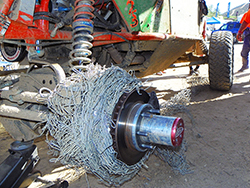 Even 20-feet of chain link wrapped around their drive axles and trailing behind them could not slow the Wickham Racing brothers
|
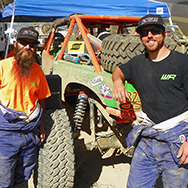 Jade Wickham (Left) and Kyle (right) rely on Spectre High Performance Racing air filters to keep their LS powered 4823 car running its best
|
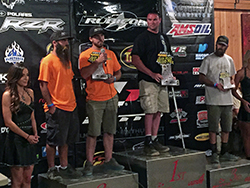 Kyle and Jade Wickham of Hagerman, Idaho took second place in the Ultra4 Racing 2015 Glen Helen Grand Prix 4800 Legends class
|
|

